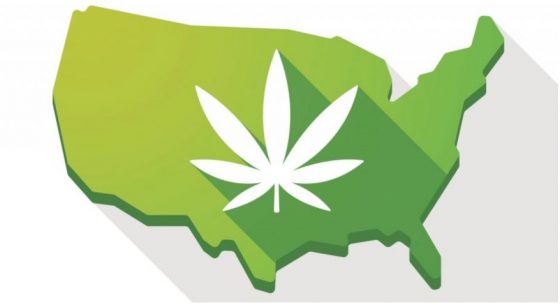None of the state medical marijuana laws adopted thus far in the U.S. can be considered ideal from a patient’s standpoint, and because of their patchwork nature, those laws do not function equitably and are often poorly designed, according to a new report by Americans for Safe Access.
The advocacy group’s new 2018 annual report, “Marijuana Access in the United States, A Patient-Focused Analysis of the Patchwork of State Laws,” evaluates every state with any medical marijuana laws on a 500-point scale.
Of the 46 states and three U.S. territories with some form of a medical marijuana program — covering about 95 percent of the country’s population — none received an “A” rating.
There is reason for patients and advocates to have optimism in seven states awarded a “B+” in 2017: California, Hawaii, Illinois, Michigan, Nevada, Ohio and Oregon. That’s a 133 percent improvement compared to 2016, according to ASA.
But there’s still a long way to go in the 16 states received an “F” this year, a grade given to the states that limit their medical cannabis programs to cannabidiol, one of the compounds found in cannabis.
That’s still better than the states that received no grade at all — Idaho, Nebraska, Kansas and South Dakota have no medical cannabis protections on the books.
“We want lawmakers to use this report to see that there are gaps in their medical cannabis programs. Even programs that have been around for decades like California still have room for improvement,” Steph Sherer, ASA’s executive director, said in a statement.
This year, ASA calls on the states to improve their medical cannabis programs in order to combat the opioid epidemic.
“Research has shown us that there can be as much as a 40 percent decrease in opioid overdose deaths in states with medical cannabis dispensaries,” Sherer said. “States with effective medical cannabis programs can save lives, and this report lays out the steps to increase program effectiveness.”
The report exams laws and regulations passed in 2017, as well as existing laws. And it grades states on a variety of categories, including:
Patient Rights and Civil Protection — A category that considers, among other issues, protection from arrest, parental rights, employment protections, housing protections and reciprocity of laws for non-resident medical cannabis patients.
Access to Medicine — Focuses on issues including distribution and delivery programs, access to dried cannabis flowers, right to edibles, concentrates and other forms of cannabis, local bans, zoning and any limits on CBD and THC.
Ease of Navigation — Looks at comprehensive qualifying conditions for access to medical cannabis, reasonable access for minors, the ability of states to add new conditions to the list of approved ailments for treatment with medical cannabis, background check requirements for caregivers, physician requirements and other issues.
Functionality — Considers whether medical cannabis patients are able to access their medicine at dispensaries or via cultivation, legal protections for patients, purchasing limits, insurance programs, as well as administrative and supply issues.
Consumer Safety and Provider Requirements — Issues such as staff training, testing requirements, product labeling, facility sanitary conditions, operating procedures and protocols for security, storage and inventory.
Read the full report by Americans for Safe Access


